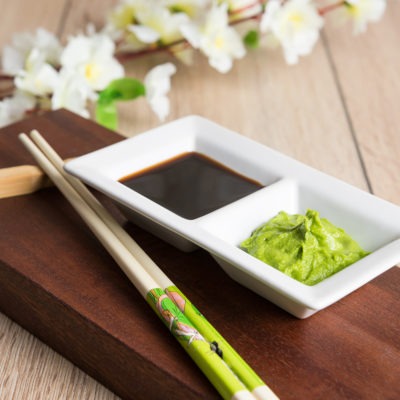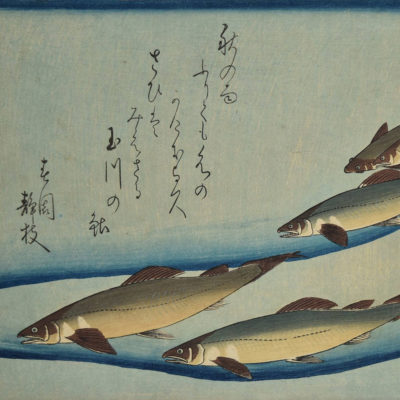About Sushi
How to eat SUSHI:
There are no real rules to observe but there are accepted ways to complement the experience.
Sushi is traditionally eaten with the fingers because the rice is meant to be packed so loosely that it falls apart in the mouth. However, in Japan some people prefer to use chopsticks.

- When eating sushi, start with the white-fleshed fish or milder tasting dishes, moving on to progressively stronger flavours.
- It is advised that pieces of sushi are eaten in one go.
- To enjoy an authentic taste of Nigiri, the topping should be dipped in soy sauce before eating, but not the rice. This is because the rice has already been seasoned. Maki roll pieces can be dipped any way you like, but be careful not to overpower the delicate flavour!
- Pickled ginger is eaten between sushi pieces to cleanse the palette.
- Traditionally wasabi is on the Nigiri pieces in between the rice and the fish but outside of Japan, wasabi is provided as a sachet to be added to pieces as people like.

History of SUSHI:
The origin of sushi is thought to lie in the first preservation techniques used by the people of South East Asia over 2000 years ago. To minimise the risk of shortages of meat and fish during the rainy and dry seasons, the people preserved the fish or meat by salting and fermenting the excess foods that had been available in other periods of the year.
The preservation soon spread throughout China and Japan and was adopted by the people of Oki-Shima, a small island south of Lake Biwa in Japan. During the high season for catching Carp (Spring), the fish were gutted and salted and left until Summer when the salt is washed away and the body of the fish was packed with cooked rice. The rice acts as a nutrient source of lactic acid bacteria which ferments the rice and fish, and after a year the resulting sour fish was called ‘Nare-Sushi’. However, the rice was discarded and only the fish was eaten.

During the Muromachi period (8th century AD) seisei-sushi was the most popular type of sushi. Sei-sei sushi was partly raw fish wrapped in rice, consumed fresh, before it lost its flavour. This new way of consuming fish was no longer a form of preservation but rather a new dish in Japanese cuisine.
During the Edo era (the early modern period, 1603 to 1868 in Japan), a third type of sushi was introduced, haya-sushi. Haya-sushi was assembled so that both rice and fish could be consumed at the same time, and the dish became unique to the Japanese culture. It was the first time that rice was not being used for fermentation. Rice was now mixed with vinegar. Fish, vegetables and dry preserved foods would be added. This type of sushi is still very popular.
Each region in Japan has its own type of sushi and in Osaka during the Edo period, the fish was also dipped in vinegar and then two ingredients were pressed together in a wooden mould, producing oshizushi (pressed sushi). This is still available today and in some Waitrose packs.
The Sushi we commonly know and eat was developed by the people of the capital of Japan, Edo (the old name of Tokyo). Today the sushi dish is internationally known as “sushi”, a fast food invented by Hanaya Yohei (1799-1858) at the end of Edo period in today’s Tokyo. People in Tokyo were living in haste, even a hundred years ago. The nigirizushi invented by Hanaya was not fermented fish, but instead raw fish was placed on top of vinegared rice and could be eaten with your fingers. This is what we all know as Nigiri sushi and is the most common sushi.